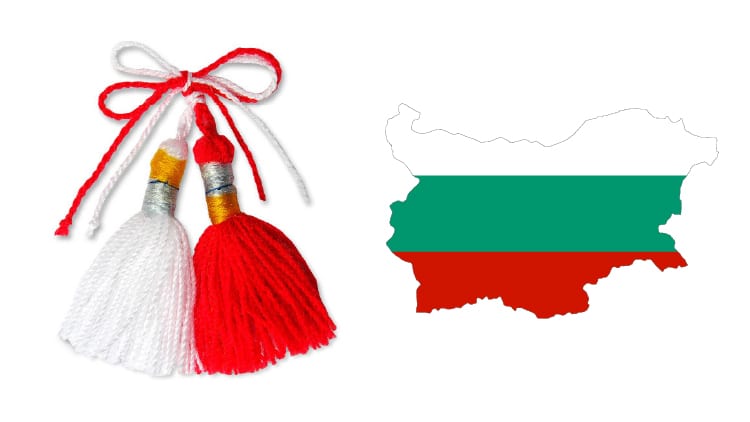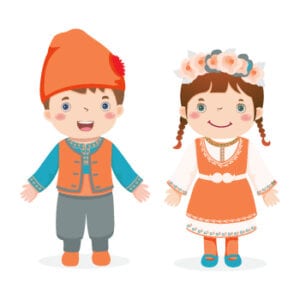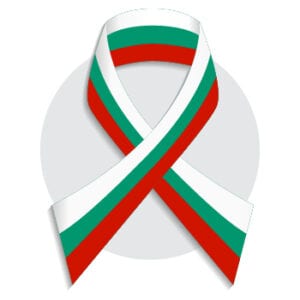Facts About Martenitsa Bulgarian Traditions

Every country has its unique traditions. When people visit a foreign country, they experience a new culture and listen to the native speakers of a language. They also get to see various traditions. Most traditions have a particular season or date when they are celebrated. They also have a long history behind them. None of them just started at random. Some of them are centuries old, while others are relatively new in comparison. In any case, they are essential to those who celebrate them and should be respected by outsiders, too.
Bulgaria:
Bulgaria is Europe’s sixteenth most significant country, known for its history. Although it is not as advanced as other European states, Bulgaria is still a developing country. The biggest problem in Bulgaria is corruption, keeping it from reaching the height of success. The population of the country is also shrinking annually. Currently, only seven million people live in the country. Machine building and mining are the most popular industries in Bulgaria. The Ottomans and the Romans ruled the land, which is evident in Bulgaria’s culture. Most people tie the martensitic on a branch of a fruit tree, thus giving the tree health and luck.
A martenitsa is a bit of red and white yarn ornament worn by individuals from the first day of March till the end of the month. The martenitsa is given to friends and loved ones in this pagan tradition. It is a cherished and revered Bulgarian custom. Martenitsa is constructed of woolen, silk, woolen thread or cotton thread twined red, white, and white thread.
Penda, the female doll, is recognized by her skirt, which is generally primarily red. Pizho and Penda, two little wool dolls, are the most characteristic Martenitsa. Pizho, the male doll, is usually predominantly white. During March, one of the most distinctive Bulgarian traditions is commemorated by producing “martensitic” (plural). According to common belief, the thread shields the children from the harsh rays of the spring sun. The ancient folk and centuries-old traditions are still practiced with love. They have played a massive part in keeping the nation united.
Martenitsa is also a potent amulet in Bulgarian folklore, protecting its possessor from bad luck and sickness.
Martenitsa:
A Martenitsa is a piece of adornment, commonly made of wool (red and white) in the shape of dolls, worn by people to welcome spring. The rules regarding tradition are different everywhere in the country. But the dolls are usually worn around the neck or wrist or pinned to clothing until the wearer sees a stork or a swallow. Seeing the first stork of the spring season means the winter is over. After that, the dolls are taken off.

Facts About Martenitsa Bulgaria Traditions:
Here are some fun facts about the Martenitsa that might give you a better understanding of it:
- Two Dolls:
A typical Martenitsa is always made of red and white wool. But it is also made in the shape of two tiny dolls: Pizho and Penda. The Pizho is a male doll that is primarily white with transparent male clothing. Penda has a skirt, her distinguishing feature, and is mainly made of red wool.
- Red and White:
The two colors used for making Martenitsa dolls are red and white. Where white signifies purity, red can be considered a symbol of life and passion. Both colors can be seen as the balance that exists in our world. They teach us that life and death must live in the world. Woven together, white and red symbolizes the wish for good health.
- Given as Gifts:
According to tradition, the Martenitsi should never be bought for oneself. They must only be given as gifts. However, there is no limitation on the number or type of people you can give them to. People mostly give them to their friends, loved ones, and family. They can also be given to acquaintances if you feel close to them.
- Baba Marta:
Baba Marta Day is 1st March when people wear their Martenitsi. In Bulgaria, a tradition like folklore, Baba Marta is a grumpy old lady whose mood swings can be dangerous. People wear red and white to ask Baba Marta for mercy. Through their Martenitsi, they hope to see the end of winter. When they see a stork, they believe Baba Marta is in a good mood and will give way to spring soon.

- Taking Off:
The ritual of taking off the Martenitsi is different everywhere. People remove the dolls and tie them around a blossoming tree in some regions. This way, they give the tree good health and luck. But in some areas, people put it under a stone and check it the next day. The kind of insect they see near the token determines their health for the following year. They will have a healthy year if they know a larva or worm. Seeing an ant is also a good omen, but a person must work hard for success. Conversely, a spider means the person will not enjoy good health or luck.
- Ancient and Modern:
The tradition is quite old and might have Pagan origins. A few features of it can also be traced back to Roman origins. Today, various versions of the tradition are celebrated in Greece, Albania, Romania, Moldova, and North Macedonia. A few changes have also been introduced in some regions. Young Bulgarians add beads to their woolen dolls. However, the idea behind the Martenitsa remains the same because, even today, it is a way of welcoming spring and hoping for an early end of winter. It is used to celebrate nature. It is also a good reminder that everything exists in a natural balance.
Learning about the traditions of a foreign country can be pretty fascinating, but it is also essential to be respectful in your actions. Curiosity should not make you disrespect a culture. Many traditions are celebrated around the world. Each of them has its unique history. By learning about the rituals celebrated by people, we can also begin to understand different cultures in a much better way. Studying the cultures of others will bring us closer to them and make world peace a reality.
Frequently Asked Questions
A Martenitsa is a little decoration (typically a bracelet or a brooch) made of wool or cotton yarn in two primary colors – white and red – that Bulgarians wrap around their wrists or clip on their garments on March 1st for good health and luck.
Because they believe that Martenitsa is a symbol of health, longevity, fertility, and abundance, the primary colors of “Martenitsa” are white and red.
Bulgarians observe a centuries-old tradition on March 1 by exchanging martensitic Baba Marta’s Day. Giving red-and-white intertwined strings to friends throughout the year provides health and happiness and reminds us that spring is coming.
Baba Marta (Bulgarian: aа арта, “Granny March”) is the name of a Bulgarian mythological person who heralds the end of winter and the arrival of spring.
The color red represents the feminine beginning – health. It means blood, conception, birth, warmth, companionship, and mutual affection. When one sees a flowering tree, a stork, or a swallow, the martenitsa is removed. The individual makes a wish and then attaches his martenitsa to a tree or places it beneath a stone.
Bulgarians observe a centuries-old tradition on March 1 by exchanging martensitic Baba Marta’s Day. Giving red-and-white intertwined strings to friends throughout the year provides health and happiness and reminds us that spring is coming.




